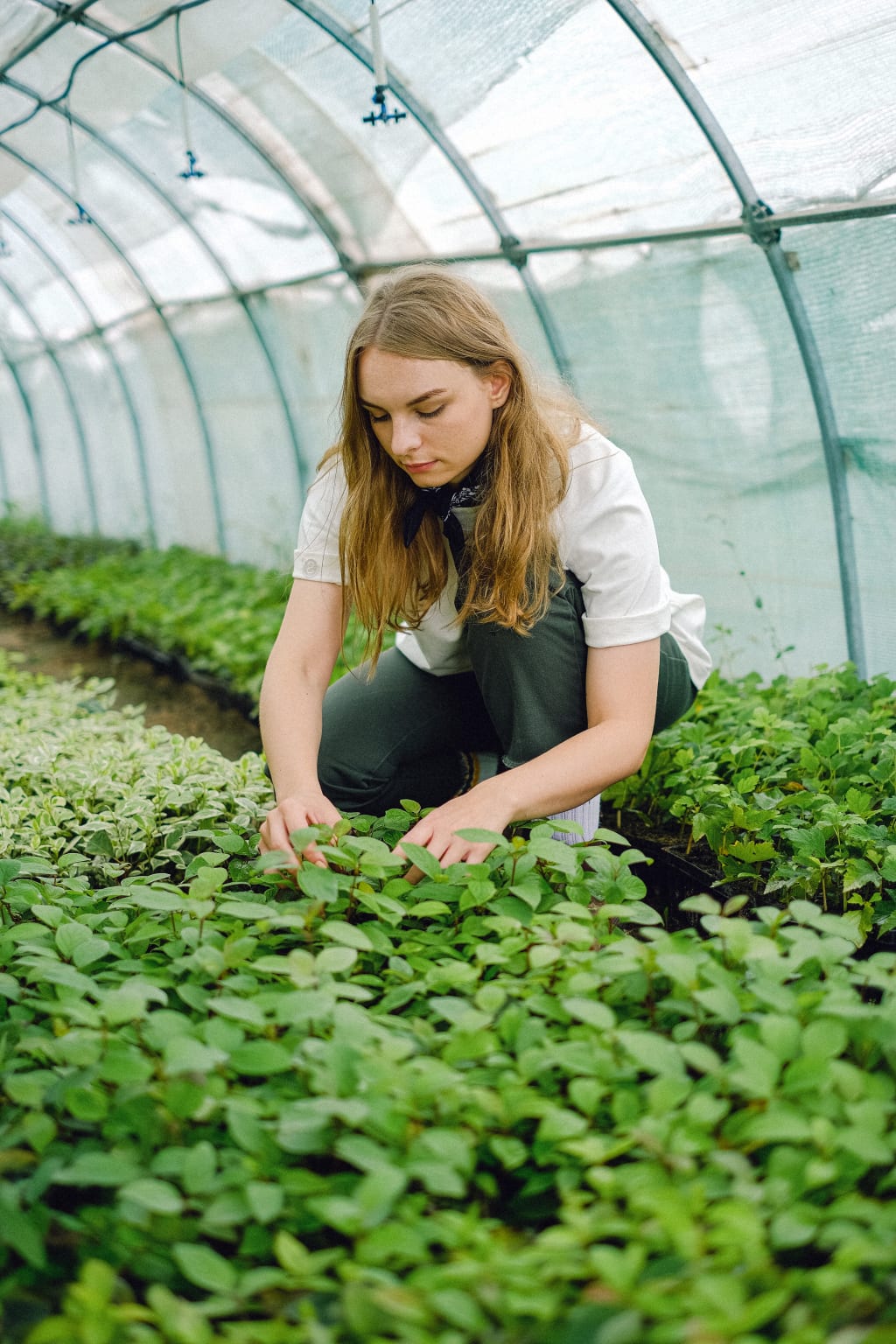Greenhouse Production
A Game Changer for Market Gardening Success in the Face of Climate Change

Greenhouse Production: A Game Changer for Market Gardening Success in the Face of Climate Change
Introduction
For those who have been following my journey over the years, it's no secret that greenhouse production has been a significant contributor to the success I've achieved in market gardening. However, as I reflect on the changing climate and its implications, I've come to realize that the role of greenhouses is evolving. With climate change shaping the future, larger and more controlled greenhouses are emerging as the ultimate game changer in the realm of agriculture. In this article, we'll delve into the pivotal role that greenhouses play, exploring their design, features, and the vital ways they empower growers to thrive amid shifting environmental conditions.
The Greenhouse Advantage
At the heart of my market garden's achievements lies a substantial greenhouse measuring 35 by 135 feet. This structure, while not massive, boasts essential features that have bolstered my cultivation endeavors. Collaborating with various greenhouse companies, I've found my preference in Arnowa, a Quebec-based powerhouse with unparalleled expertise in greenhouse manufacturing. Their vast experience and personalized service have proved invaluable.
Design for Efficiency
Within the greenhouse, indoor conditions are paramount. Whether heating or cooling, insulating the structure is key to optimizing energy usage. A double-poly system for the roof provides two layers of plastic, separated by an inflated air pocket. This innovative design minimizes heat loss and prevents overheating. Polycarbonate end walls offer enhanced insulation and durability, particularly for north-facing walls. Attention to detail, such as proper sealing of doors, further contributes to energy efficiency and potential pest exclusion.
Form and Function: The Gothic Advantage
The greenhouse design plays a significant role in its effectiveness. A Gothic-style structure, like the one I've chosen, is ideal for our climate. Its shape facilitates snow and rain shedding, preventing water from seeping into the greenhouse. Moreover, this design permits more natural light, a vital factor for optimal plant growth. Thoughtful selection of UV-treated, thick plastics ensures longevity and functionality, with features like a no-drip strategy minimizing excess humidity caused by condensation.
Air Volume Matters
Surprisingly, the size of the greenhouse impacts its performance. A larger volume of air acts as a buffer against temperature fluctuations, whether retaining heat in winter or cooling in summer. Adequate airflow is crucial, and this is where fans come into play. Effective air circulation prevents dampness and fosters healthy growth. A roll-up system for side ventilation, combined with a three-foot-high skirt, optimizes airflow while protecting crops from direct drafts.
Climate Control: The Key to Future Success
Greenhouse production isn't just about the present; it's an investment in the future. As climate change reshapes weather patterns, having the means to control humidity, temperature, and other conditions becomes essential. This level of control will likely be the dividing line between successful cultivation and struggles with unpredictable outdoor conditions. Greenhouses enable growers to harness the benefits of both indoor and outdoor growing, mitigating the impact of climate-related challenges.
Bountiful Harvests and Adaptive Growth
Inside my greenhouse, a thriving ecosystem comes to life. A mix of crops, including tomatoes, celery, basil, hot peppers, and zucchini, flourish under carefully controlled conditions. Seasonal and climate-appropriate planting, supported by targeted water management and supplemental nutrition, ensures consistent yields. The flexibility to modify growing conditions empowers growers to adapt to changing circumstances, fostering an environment where even niche crops can thrive.
Conclusion
As the challenges posed by climate change continue to unfold, the role of greenhouses in market gardening has taken on newfound importance. With the ability to tailor growing conditions to match the evolving environment, greenhouses offer a beacon of hope for the future of agriculture. For those who have stood by me throughout my journey, I encourage you to explore the possibilities that greenhouses present. Embracing their potential can help secure a promising future for growers, ensuring consistent yields, thriving crops, and a sustainable path forward.
About the Creator
shoaib yasin
I am an accomplished Vocal Media article author who captivates readers with their compelling stories and enlightening viewpoints. I have established himself as an authoritative voice on a variety of subject thanks to his varied experience
Enjoyed the story? Support the Creator.
Subscribe for free to receive all their stories in your feed. You could also pledge your support or give them a one-off tip, letting them know you appreciate their work.






Comments
There are no comments for this story
Be the first to respond and start the conversation.